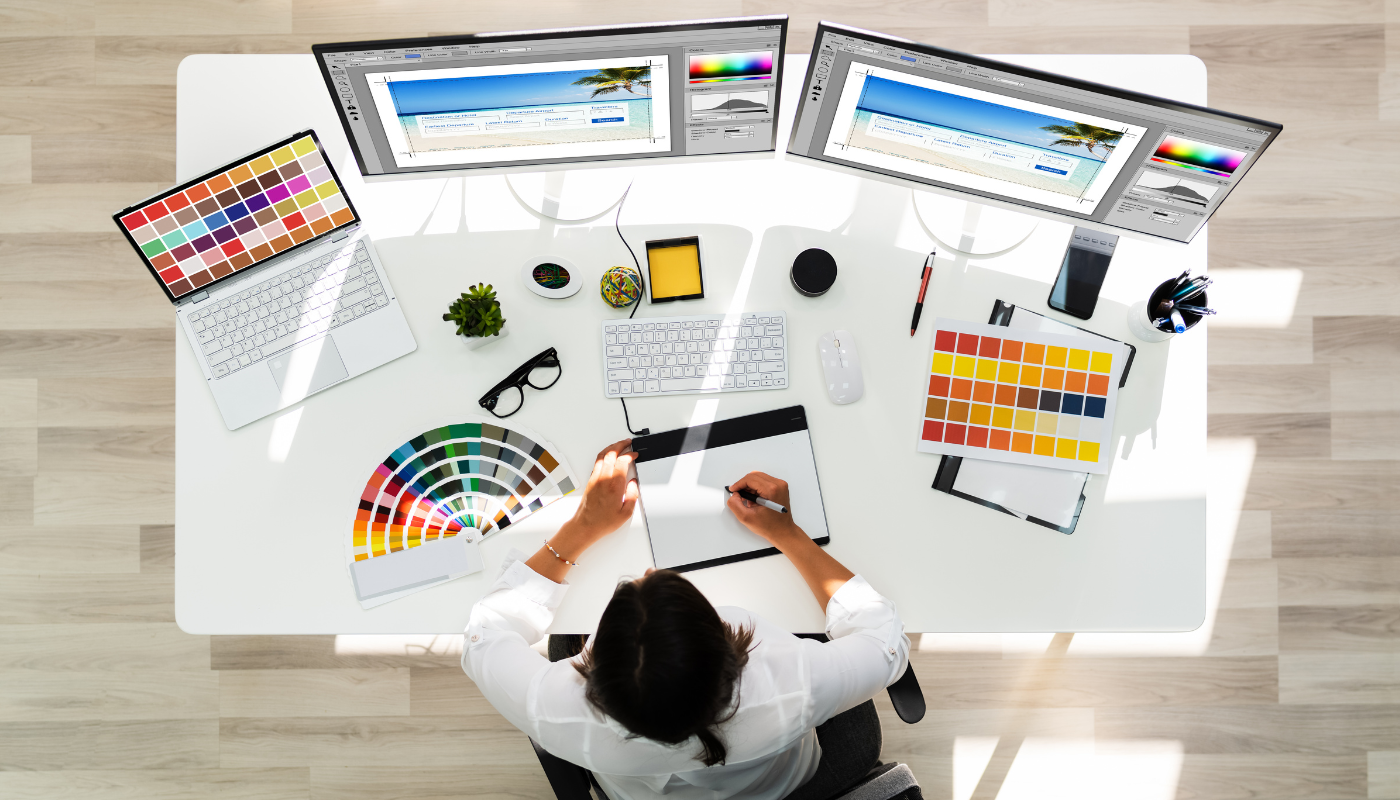When designing an impressive piece, it’s important to ensure that every component integrates well with the others. To develop effective designs, you must combine these components into a cohesive and harmonious composition.
Grasping the concept of unity in graphic design can aid you in achieving your objectives and assembling the visuals you wish to present.
What Does Unity Mean in Graphic Design?
In graphic design, unity is the principle that connects all other elements of the design. Your design needs to have a clear focus. Every component of the piece should appear to be integral, rather than appearing isolated or mismatched with the other parts. By emphasizing unity, you can create a feeling of familiarity and appropriateness for viewers, making it simpler for them to engage with your design and leave with the intended impression.
How to Use and Achieve Unity in Graphic Design
Achieving unity involves applying specific techniques to create a harmonious composition. Here are key strategies to ensure your designs are cohesive and impactful:
1. Start with a Clear Vision or Purpose
Begin by defining the target audience, core message, and desired emotional response. A clear vision guides every design choice, ensuring all elements contribute to the overall cohesiveness.
Example: For a sustainable clothing brand, a vision of “eco-friendly elegance” informs color choices, typography, and imagery to create a unified brand identity.
2. Incorporate Repetition, Texture, and Patterns
Using repetitive elements like shapes, colors, and patterns creates visual rhythm and continuity. This establishes a visual hierarchy and guides the viewer’s eye through the design.
Example: A brochure for a sustainable furniture company might feature a repeating leaf pattern to unify the layout and reinforce the eco-friendly theme.
Key Techniques:
- Repetition: Consistently use specific shapes or colors.
- Texture: Add depth and interest without overwhelming.
- Patterns: Create visual continuity across the design.
3. Utilize Proximity to Establish Relationships
Grouping related elements together through proximity helps create visual connections and organizes the composition. This guides the viewer’s attention to important areas and enhances readability.
Example: In a magazine layout, placing the title, subheading, and image close together creates a cohesive section that is easy to navigate.
4. Choose Colors that Work Well Together
Color harmony is crucial for unity. Select a color palette that aligns with your theme and ensures all colors complement each other.
| Color Scheme | Description | Example Use Case |
| Complementary | Colors opposite on the color wheel | Vibrant branding materials |
| Analogous | Colors next to each other on the color wheel | Calming wellness websites |
| Monochromatic | Variations of a single color | Minimalist product packaging |
Example: A wellness center might use soft greens, blues, and neutrals to evoke serenity and balance.
5. Maintain a Consistent Style
Consistency in typography, imagery, and overall aesthetic ensures that all design elements feel part of a unified whole. A consistent style reinforces brand identity and makes the design appear polished.
Example: A luxury watch brand might use a refined serif font and minimalist illustrations across all marketing materials to maintain a sophisticated look.
6. Select Fonts that Align with Your Theme
Typography plays a significant role in unity. Choose fonts that complement the design’s theme and maintain consistency in size, spacing, and hierarchy.
Example: A tech startup might use modern sans-serif fonts to convey innovation and simplicity, ensuring a cohesive user experience across their website.
Conclusion
Unity is a fundamental principle in graphic design that ensures all elements work together harmoniously. By defining a clear vision, using repetition and proximity, selecting harmonious colors, maintaining a consistent style, and choosing appropriate typography, designers can create visually compelling and cohesive designs. Mastering these techniques enhances your ability to communicate effectively and produce standout designs in a competitive visual landscape.

Passionate game developer and writer with more than five years of industry experience. He has a solid foundation in programming and game design, focusing on indie development, emerging technologies, and design principles. Ryan’s writing is geared toward helping developers, from beginners to veterans, with practical advice and creative inspiration, making complex concepts accessible and inspiring new approaches to game creation.

